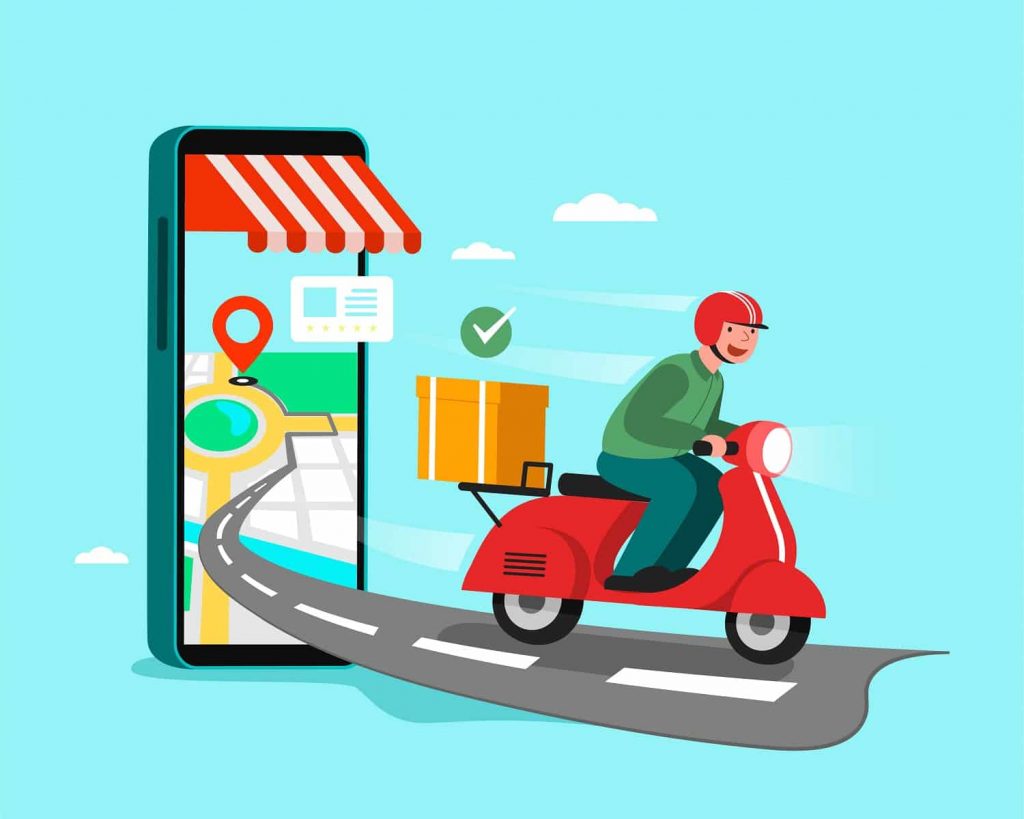5 Delivery Options for Your Ecommerce Store: Which is Right for You?

If you don’t get delivery right, it doesn’t matter if you’ve got the best ecommerce site design on the planet. This is because customers will simply not remain loyal to you if the first purchase they make doesn’t arrive as promised, or there are any other hiccups and holdups in the delivery process.
As such, it’s important to think about what shipping options you should offer to win over site visitors in the first place, then impress them with your execution of last-mile delivery.
Here’s an overview of what choices you have to make as an ecommerce business if you want your delivery solutions to be top notch, and in keeping with market norms right now.
Deliver It Yourself: A Deep Dive into DIY Delivery
Delivering it yourself (DIY) can be a great way to increase customer loyalty and generate extra revenue. There are also other perks to taking care of shipping in-house which can tip the scales in its favor, so long as it suits the scope and target areas of your site.
Most importantly, with the right infrastructure in place, it’s an efficient and cost-effective option that gives businesses more control over their delivery processes. The first step is to determine if this model is feasible for your business. You’ll need access to reliable transportation and staff that are able to manage orders on time. Plus, you’ll have to consider potential costs such as fuel expenses, insurance coverage, maintenance fees, and so forth, which could quickly add up if not managed properly.
To ensure success with DIY delivery methods, create detailed plans outlining workflow processes such as order packing procedures or route optimization strategies. That way, operations will run smoothly during peak hours of demand or busy holiday seasons when deliveries become increasingly complex due to volume increases.
Communication is also key and you need to wow them with their first experience. Let buyers know their orders will be delivered by your own staff, and provide clear instructions on how to track packages while in transit.
When done right, DIY delivery methods can significantly reduce costs while creating a sense of customer loyalty that many third-party services lack. So if you think this could work for your business, start doing the research and create an efficient plan for a successful delivery system.
Automating Shipping with Third-Party Logistics Services
If you’re looking to rise above the competition and develop your brand, outsourcing your deliveries can be an appealing alternative to the DIY approach.
Third-party logistics services offer automated shipping solutions that are designed to save time and money while providing reliable delivery experiences for customers. It also means you don’t need to invest time and effort in putting together the necessary infrastructure yourself, but can trust an external operator to take the reins throughout.
When selecting a third-party provider, consider their expertise in eCommerce operations such as order fulfillment and returns processing, how well they track orders throughout transit, what kind of customer service options are available should any issues arise during delivery, and whether or not their pricing is competitive within the industry.
It’s also important to determine if they provide international shipping capabilities so you can expand your business into new markets without having an extra layer of admin added on top of existing processes.
By using automated systems from third parties, businesses have more control over their operation costs, since most providers charge per shipment rather than by weight or volume like traditional couriers do.
Also, these services often come with specialized customer support and tracking capabilities that make it easier to provide timely delivery updates to customers, reducing the chances of negative reviews or product returns.
Making a Name for Your Business with Crowdsourced Delivery
The popularity of crowdsourced delivery has increased exponentially in recent years, and it’s really down to the rollout of modern tech that makes this a possibility for organizations of all sizes.
This type of service uses independent contractors or “gig workers” as an alternative to traditional shipping methods, allowing businesses to offer faster deliveries and better customer experiences.
Crowdsourced delivery has several advantages over other options; it’s cheaper than hiring a full-time team, there are less long-term commitments since contracts can be adjusted based on demand, and most importantly, the flexibility allows you to quickly scale operations up or down depending on business needs.
In addition, by using drivers from your own community in combination with conventional couriers, customers will feel more connected with their orders – creating a unique selling point that could make all the difference when vying for market share.
Even more significantly, using this model lets you take charge of branding opportunities, such as by using branded packaging materials, which further strengthens relationships between buyers and sellers.
Leveraging Local Pickup to Increase Customer Satisfaction and Drive Sales
If you want to boost customer satisfaction while still keeping delivery costs low, consider offering local pickup options as part of your delivery ecosystem.
This type of service allows customers to pick up their orders at designated locations near them, which is especially useful if they live in remote areas or don’t have access to conventional shipping services.
The key here is convenience. Make sure the pickup location is easily accessible with clearly marked signs so that customers can find it without any difficulty. You should also provide clear instructions on how pickups work, such as payment methods accepted or timeframes for collecting orders once they’ve been placed.
Additionally, consider adding additional features like security lockers or pre-packaged bags – anything that enhances the overall experience will be appreciated by your customers and help drive sales over time. Furthermore, using this model gives businesses more control over order fulfillment processes since there’s no need for third-party couriers.
There are existing eCommerce pickup delivery services that you can tap into if you don’t want to be responsible for all of the aforementioned elements yourself. So once again, it’s about considering the needs of your customers, as well as your budget and what resources you have available in-house to handle any delivery option you decide to provide.
Streamlining Last Mile Fulfillment With On Demand Courier Solutions
If your delivery needs are less predictable than most eCommerce sites, or you have specific requirements in a given area, such as a densely populated city, then working with an on-demand courier service provider is wise.
This type of service is perfect for businesses that want to provide fast, reliable deliveries on the fly, without relinquishing too much control over this aspect of their operations.
On demand couriers offer a variety of features such as real-time tracking, automated order notifications, and payment options which can help improve customer experience and reduce the amount of time spent managing orders. And of course, because you’re only paying for what you use, it’s also good at accommodating the seasonal peaks and troughs in demand for eCommerce deliveries.
With access to professional drivers who are familiar with local areas, businesses have greater flexibility when it comes to delivering goods within tight deadlines or during peak hours when traditional shipping methods may not be available.
Further good news is that most providers also allow customers to personalize their delivery experiences by offering different pickup/delivery times or locations depending on their unique needs. This helps create long-lasting relationships between buyers and sellers since customers will feel like they’re getting bespoke services tailored just for them.
Final Thoughts
Usually, your eCommerce site will require a combination of delivery methods to strike the right balance to keep customers onboard while managing costs. Hopefully, you’ve now got the information you need to make an informed decision, and implement your plans smoothly.
Sell more, understand your customers’ journey for free!
Sales and Marketing teams spend millions of dollars to bring visitors to your website. But do you track your customer’s journey? Do you know who buys and why?
Around 8% of your website traffic will sign up on your lead forms. What happens to the other 92% of your traffic? Can you identify your visiting accounts? Can you engage and retarget your qualified visitors even if they are not identified?




